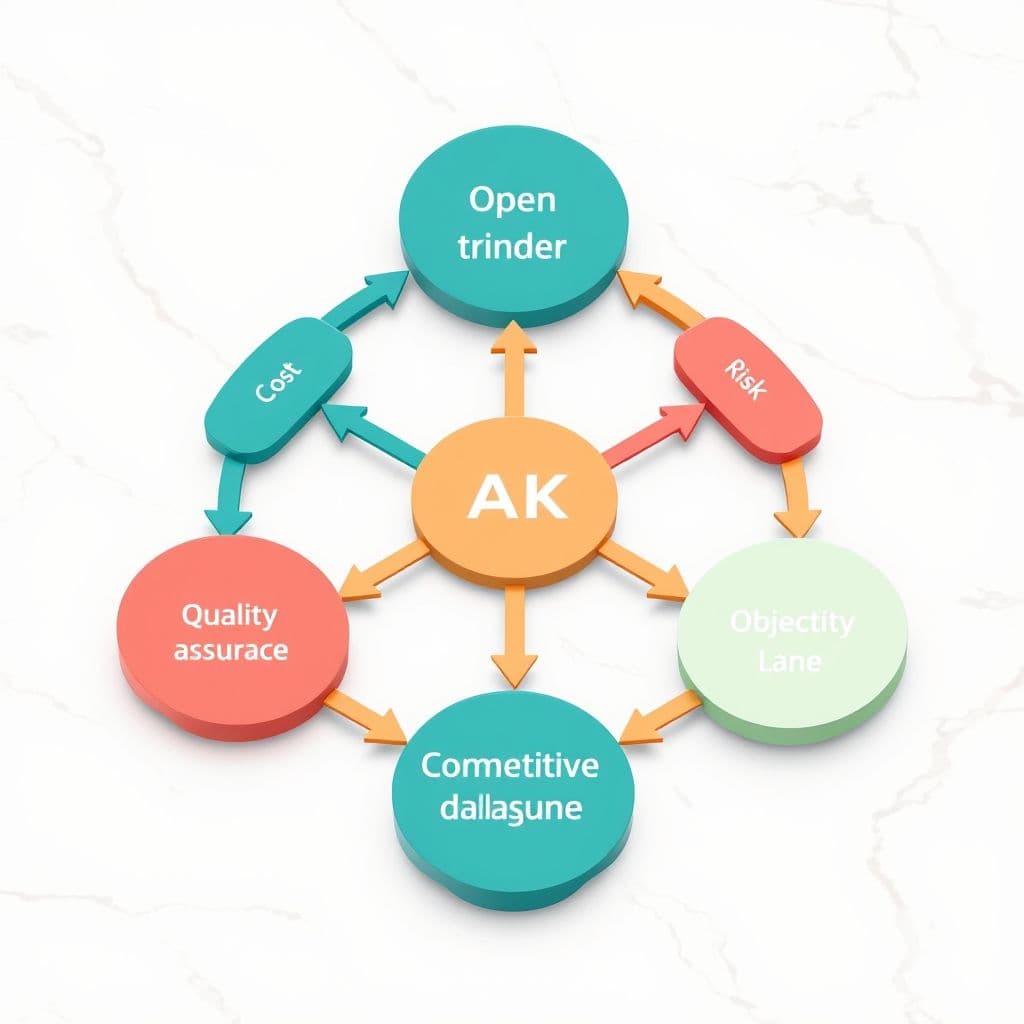Procurement Mastery: A Step-by-Step Guide to Business Success

Procurement is the backbone of any successful business, ensuring the right goods and services are acquired at the best possible terms. Whether you're a budding professional or a seasoned manager, mastering procurement can significantly enhance your organization's efficiency and profitability. This guide will walk you through the seven critical steps to achieve procurement mastery, complete with practical tips and actionable insights. View original learning path
Step 1: Understand the Basics of Procurement
Procurement is the process of sourcing and acquiring goods and services necessary for business operations. It plays a pivotal role in cost reduction, quality assurance, and supply chain efficiency. Key objectives include minimizing costs, ensuring timely delivery, and maintaining quality standards. Procurement processes can vary, including direct procurement (raw materials for production) and indirect procurement (office supplies or services). Understanding these basics sets the foundation for advanced procurement strategies.

Step 2: Learn about Procurement Planning
Procurement planning is the roadmap to successful acquisitions. It involves identifying needs, setting budgets, and defining timelines. The procurement cycle includes stages like requisition, supplier selection, and contract award. A well-crafted procurement strategy aligns with business goals, ensuring resources are allocated efficiently. For example, a manufacturing firm might prioritize bulk purchasing to reduce costs, while a tech startup may focus on flexible contracts to adapt to rapid changes.
Step 3: Master Supplier Selection and Evaluation
Choosing the right suppliers is critical for quality and reliability. Criteria include cost, delivery time, reputation, and compliance with standards. Evaluation methods range from Request for Proposals (RFPs) to site audits. Regularly measuring supplier performance through KPIs like defect rates or on-time delivery ensures continuous improvement. Negotiation skills are also vital—aim for win-win agreements that foster long-term partnerships.

Step 4: Gain Expertise in Contract Management
Contracts are the backbone of procurement relationships. The contract management process includes drafting, negotiation, execution, and administration. Key elements are pricing, delivery terms, penalties, and dispute resolution clauses. For instance, a well-drafted contract might include milestones for phased deliveries, ensuring accountability. Regular reviews and enforcement mechanisms prevent misunderstandings and breaches.
Step 5: Develop Skills in Risk Management
Procurement risks—like supplier bankruptcy or price fluctuations—can disrupt operations. Start by identifying potential risks, then assess their impact and likelihood. Mitigation strategies include diversifying suppliers or locking in prices with long-term contracts. Continuous monitoring and contingency plans (e.g., backup suppliers) ensure resilience. For example, a food manufacturer might source ingredients from multiple regions to avoid shortages due to climate issues.
Step 6: Understand Ethical and Legal Considerations
Ethical procurement builds trust and compliance. Follow principles like fairness, transparency, and accountability. Legal frameworks (e.g., anti-bribery laws) vary by region but are non-negotiable. Implement checks like third-party audits to prevent fraud. A clear procurement policy, communicated across the organization, ensures everyone adheres to best practices.
Step 7: Continuously Improve Procurement Practices
Procurement isn’t static. Regularly evaluate performance metrics like cost savings or supplier reliability. Adopt technologies like e-procurement platforms for automation and data analytics. Stay updated with industry trends—blockchain for transparency or AI for predictive analytics. Continuous improvement fosters agility and competitive advantage.
Conclusion
Mastering procurement transforms how your business operates, driving efficiency, cost savings, and strong supplier relationships. By following these seven steps—from understanding basics to embracing continuous improvement—you’ll build a robust procurement framework that supports long-term success.
Frequently Asked Questions
- How long does it take to master procurement?
- Mastery depends on practice and industry complexity. Beginners can grasp basics in weeks, but advanced skills like risk management may take months of hands-on experience.
- What are common mistakes in procurement?
- Rushing supplier selection, neglecting contract details, and overlooking risk planning are frequent pitfalls. Always prioritize due diligence and long-term planning.
- How can technology improve procurement?
- Tools like e-procurement software automate workflows, while AI and analytics enhance decision-making with real-time data and predictive insights.





